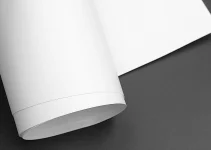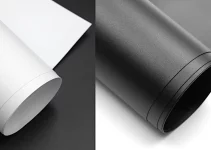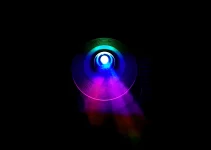The easiest way to answer the question what is contrast ratio in a projector is this: when the projector is set up in a completely dark room that’s cut off from any light source, the blacks in the displayed image should be truly black.
Generally, the higher the contrast ratio is, the better the overall image quality is. A high contrast ratio is indicative of an image with rich, clear details, a lifelike image being displayed on our projector screen.
We can easily state that contrast ratio is the most important aspect of picture quality because it ultimately determines how good the projected image looks.
However, you also need a very good projector screen. It’s absolutely essential. Without that, just by projecting on a wall, you won’t be able to tell just how good your device is.
Table of Contents
What Is Contrast Ratio in Projector? Why it Matters
A high contrast ratio ensures that the blacks are black. Not gray, not washed out blacks, not sort of black. Although is well known that projectors can’t actually achieve pure black levels like an OLED display for example, that is just not possible.
Contrast ratio is a spec that matters quite a lot when we’re talking about ultra-deep blacks. It’s a spec that’s talked about and taken into account when we’re talking about projectors, TVs, monitors, laptops, etc.
I gave you my way of understanding what this spec is. Now, let’s see what experts say.
According to Epson, contrast ratio is the difference between light and dark on a screen, being expressed by a number. The number is obtained by taking the the brightest white and the darkest black and comparing the luminosity.
As an example, if we have a 1,000:1 contrast ratio, we could say that the brightest white is 1000x brighter than the darkest black.
However, as I said, when we evaluate the contrast ratio on a projector, we look to see if the blacks are deep enough.
That’s why it becomes a feature that’s especially important when there’s no source of light in the room. Because that’s when we can really see the blacks. Thus, it’s important for home theater projectors.
Moreover, when we’re watching movies in ambient light, a high contrast ratio will ensure that we get rich cinematic content because there truly is a highly significant difference between whites and blacks.
On the other hand, data projectors (those used for business, education) don’t necessarily need a very high contrast ratio because they’re used in ambient light or with the lights on or with sunlight pouring from the windows. If you are interested in such models, check out my reviews for the best projectors for daylight.
Is Higher Better?
Generally, when we’re talking about specs, higher is always better. We want higher resolution, higher lumens volume, higher contrast ratio, higher lamp life, higher number of connections, and so on.
A higher contrast ratio equals deeper blacks. When it’s paired with high color gamut or color accuracy, it leads to better picture quality, more lifelike images, 3D images instead of 2D ones.
Now that we’ve answered the question what is contrast ratio for a projector, let’s talk about what is a good contrast ratio for projector.
What Is a Good Contrast Ratio for a Projector?
This is when things get a bit complicated. Sure, in theory, we know what contrast ratio is and that it needs to be high.
However, how do we determine what is a good contrast ratio for a projector? After all, each model differs quite considerably from another, even if they’re from the same manufacturer.
We can get numbers as low as 10,000:1, 20,000:1 or 40,000:1. Or we can get some really high numbers like 200,000:1 or 300,000:1 or 500,000:1.
From my personal experience I would say that you should not go lower than 10,000:1. Anything above 25,000:1 looks good and the higher you go the better the image.
For example, Epson Home Cinema 1080 has a 16,000:1 contrast ratio, while Epson Home Cinema 3200 has a 40,000:1 one.
In both cases I can totally say that their blacks are really nice, nothing is washed out and the overall image quality is truly impressive when it comes to their respective prices.
On the other hand, we have the Optoma HZ39HDR that has a 300,000:1 dynamic contrast ratio but in my opinion it doesn’t deliver what this impressively high number promises because it’s a DLP projector and not a LCD one. DLPs are not on the same level as LCDs when it comes to color accuracy.
However, Optoma HZ39HDR is still overall a good device, it’s one of the most affordable 1080p laser models that you could get, with the provision that you keep in mind that it’s a DLP.
Price range
I want to make something clear, a fact that you might already know: a projector that costs under $1,000 or even $2,000 will not have ultra-deep blacks. That’s to be totally expected.
Even so, most models in that price range will have very good blacks. They won’t be spectacular but they are really good.
In the end, the thing that truly matters is that they’re capable of displaying lifelike images, whether we’re watching TVs, movies or we’re playing games from our consoles.
Just above this lower price range of $1,000-$2,000, we can for example find the NEC PJ-P525UL with a 500,000:1 dynamic contrast ratio, even if it’s mostly a business/education projector. This is an example of a device that has overall impressive specs across the board and a price to match those specs.
DLP vs LCD vs LCoS
Above, I’ve already mentioned that a DLP might have a really high contrast ratio but not necessarily meet the expectations of those high numbers.
We can safely say that out of the three chip technologies used for producing the image displayed on a wall/screen, DLP is the one that offers the lowest satisfaction. They’re overall pretty good but not on the same level with LCD and LCoS.
LCD models come second but LCoS projectors have really impressive contrast ratios.
Out of the three, LCoS is the one that offers the most realistic images but this type of projectors easily exceed $3,000 at the least. That’s the lowest price.
If you’re interested in LCoS projectors, Sony, Canon, and JVC are the manufacturers to check out.
In the end, there is no definitive answer to the question of what is a good contrast ratio for a projector since this spec can vary so greatly, from my point of view as I stated above anything above 25,000:1 looks good.




